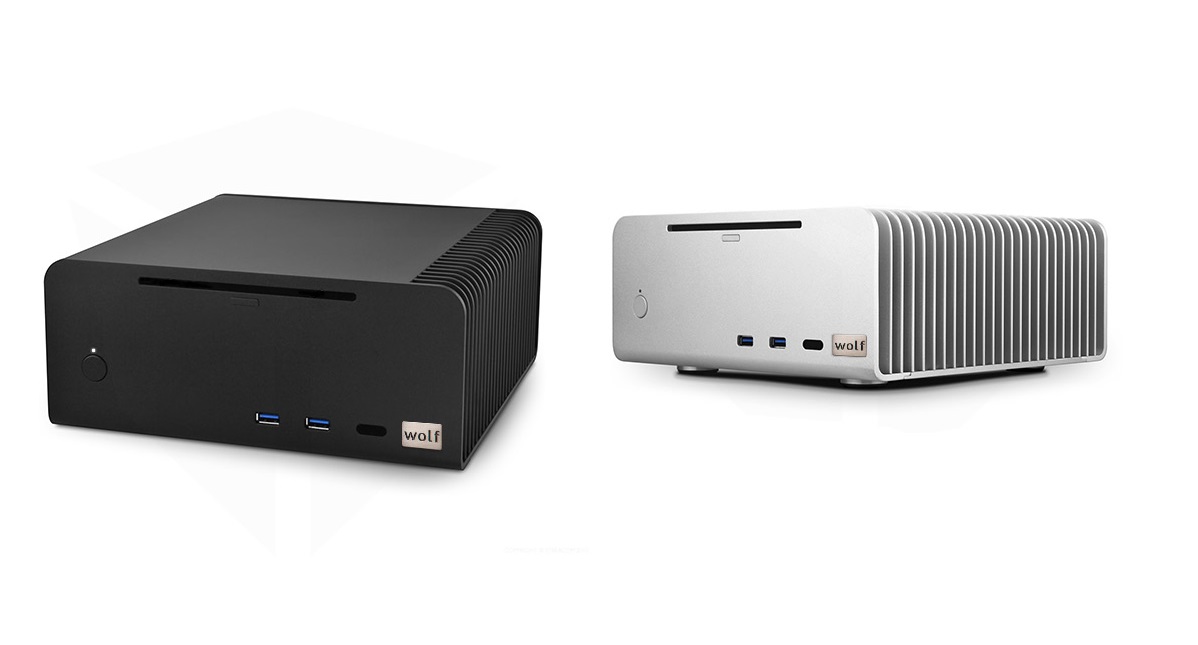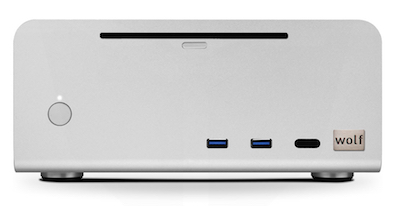Boulder, Colorado, September, 2024 – PS Audio now offers its Stellar Strata MK2 integrated amplifier, with updated features including a moving-magnet/moving coil phono stage, a built-in improved high-resolution DAC, a Class A analog preamp stage, a headphone output, 150 watts of output power, and more.
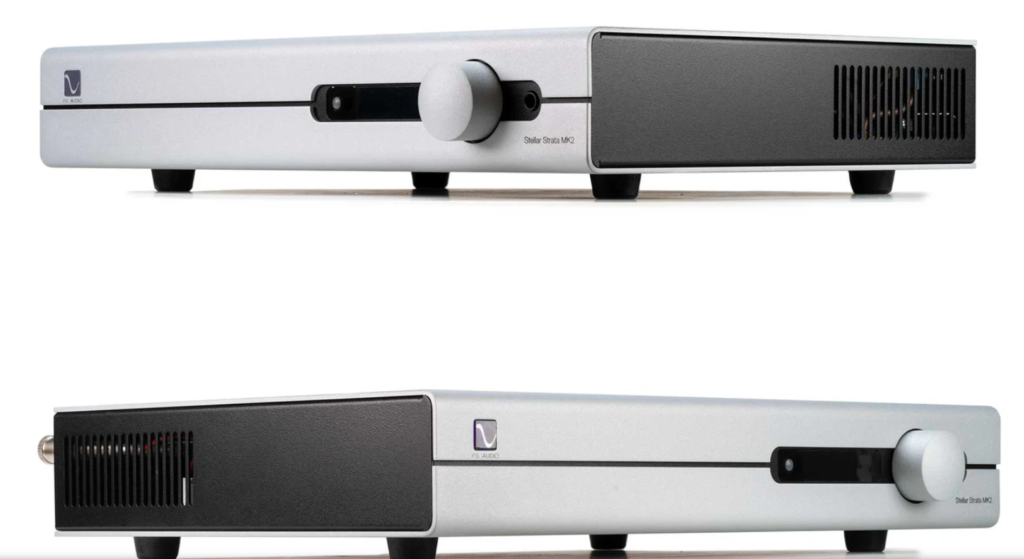
Paul McGowan, PS Audio CEO noted, “The Stellar Strata MK2 significantly improves upon the original Strata concept of providing a superb-sounding, versatile high-end integrated amplifier. Designing the Strata MK2 gave us the opportunity to implement our latest technical advancements in an all-in-one audio component that offers exceptional sound, has an attractive, compact design, and is easy to use.”
Analog enthusiasts can now enjoy the benefits of superior vinyl playback, thanks to the PS Audio’s Stellar Strata MK2’s new moving magnet/moving coil phono stage. Two stereo pairs of MM and MC RCA phono inputs are provided, plus two RCA and XLR line-level inputs. The Strata MK2 features fully balanced analog preamplifier circuitry.
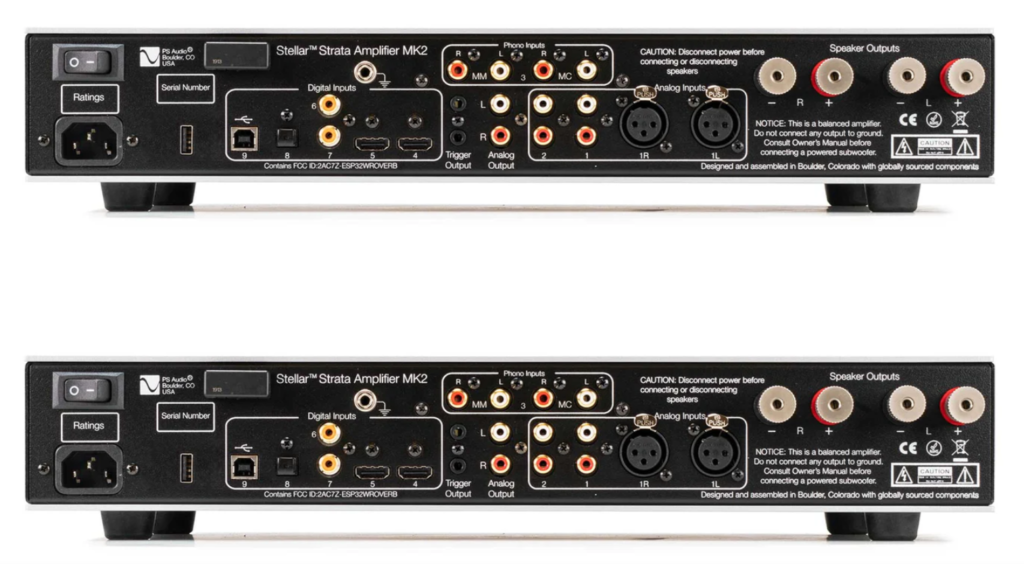
It’s equally flexible in accommodating digital sources.
The Strata MK2’s built-in DAC can deliver up to 384kHz digital audio (depending on the source), with native DSD capability up to DSD256. The Strata MK2 includes one optical and two coaxial digital inputs, plus asynchronous USB and two I2S inputs. For headphone listeners, the Strata MK2 offers a top-quality Class A headphone amplifier.
The DAC utilizes PS Audio’s exclusive Digital Lens technology to deliver extraordinary sound quality from any digital source. All digital signals are fed in native mode into the DAC’s proprietary Digital Lens, which recognizes the sample rate, re-clocks the data, reduces jitter, and applies other processing.
The Stellar Strata MK2 is fully balanced from input to output, for extremely transparent, detailed sound quality and ultra-quiet operation. Its Class A preamplifier stage features PS Audio’s exclusive analog Gain Cell variable-gain volume circuitry, which eliminates the sonic degradation that can be caused by conventional volume controls.
A high-current, Class D hybrid output stage with exceptional linearity delivers 150 watts of power (into 4 ohms), to ensure that the most delicate musical details are faithfully conveyed, as well as the most complex orchestral crescendos.
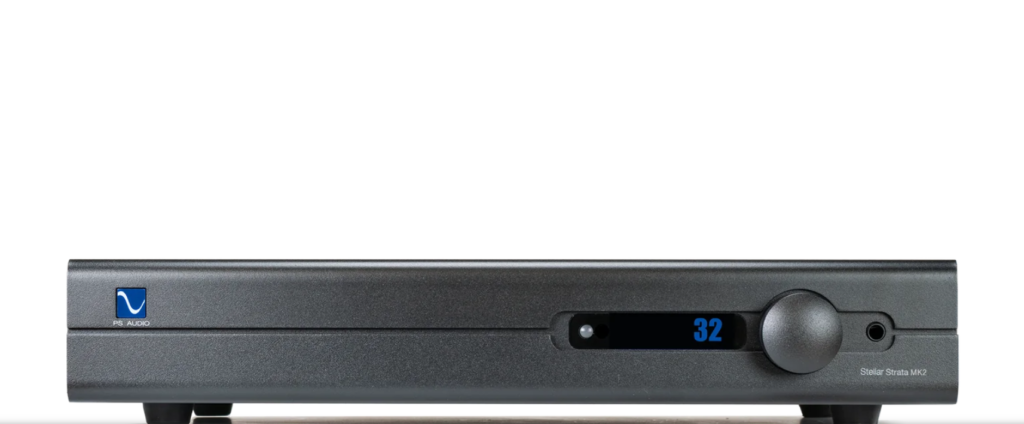
Also available in black.
The PS Audio Stellar Strata MK2 offers a number of additional performance and convenience features. It’s digital filter for PCM sources allows the listener to choose between three settings, to tailor the response to personal preferences and program sources. The Strata MK2 also provides balance and phase controls (the latter for digital sources), input trim for each source, a headphone volume trim control, a USB port for potential future firmware upgrades, and a trigger output.
The PS Audio Stellar Strata MK2 integrated amplifier is currently available in a choice of silver or black finish at a US manufacturer’s suggested retail price of $3,499 usd/ $4,727 cad. Only available via official dealers near you. For the Silo, Frank Doris.
Stellar Strata MK2 Features at a Glance:
Class A balanced analog Gain Cell preamplifier
Moving magnet/moving coil phono stage
Full-function DAC to accommodate up to 384kHz digital audio and native DSD up to DSD256
Three single-ended and balanced analog inputs; moving magnet and moving coil phono inputs; digital inputs including two coaxial, two I2S, optical, and USB (asynchronous to 384kHz)
Digital Lens technology Digital Lens re-clocks incoming data to reduce jitter and provide additional sonic advantages
150 watts per channel into 4 ohms, 100 watts into 8 ohms; high-current Class A hybrid output stage
Built-in Class A headphone amplifier
5- 15-volt trigger output for connection to other A/V system components
21 lbs., 17″ wide by 2.8″ high by 13.5″ deep

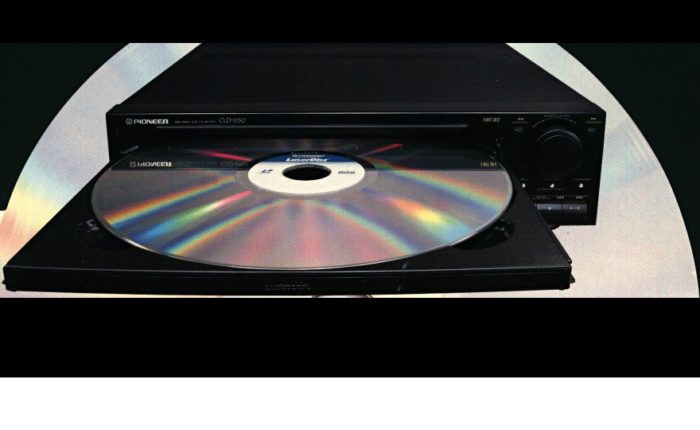
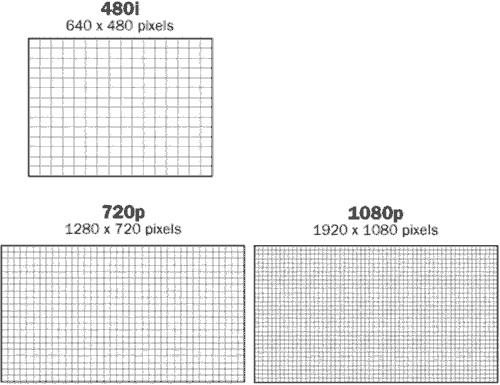 This allowed for extras such as director’s commentary tracks and other features to be added onto a film, creating “Special Edition” releases that would not have been possible with VHS. Disc access was random and chapter based, like the DVD format, meaning that one could jump to any point on a given disc very quickly. By comparison, VHS would require tedious rewinding and fast-forwarding to get to specific points.
This allowed for extras such as director’s commentary tracks and other features to be added onto a film, creating “Special Edition” releases that would not have been possible with VHS. Disc access was random and chapter based, like the DVD format, meaning that one could jump to any point on a given disc very quickly. By comparison, VHS would require tedious rewinding and fast-forwarding to get to specific points.
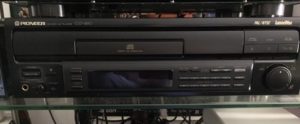
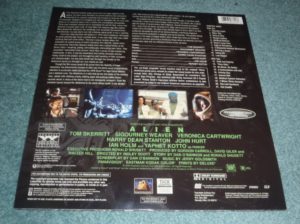 Another important innovation for Laserdisc was the fact that it was the very first home video format to offer Dolby Digital Surround Sound- often referred to as AC-3 on Laserdisc jackets and hardware. Many fans of Laserdisc are still enjoying this feature because some movies such as the Alien AC-3 LD were released with their original cinema surround mix on the AC-3 Laserdisc and those mixes are unavailable on today’s modern formats such as Blu-ray or UHD Blu-ray. Many early LD players can even be modified to turn them into AC-3 LD players.
Another important innovation for Laserdisc was the fact that it was the very first home video format to offer Dolby Digital Surround Sound- often referred to as AC-3 on Laserdisc jackets and hardware. Many fans of Laserdisc are still enjoying this feature because some movies such as the Alien AC-3 LD were released with their original cinema surround mix on the AC-3 Laserdisc and those mixes are unavailable on today’s modern formats such as Blu-ray or UHD Blu-ray. Many early LD players can even be modified to turn them into AC-3 LD players.





